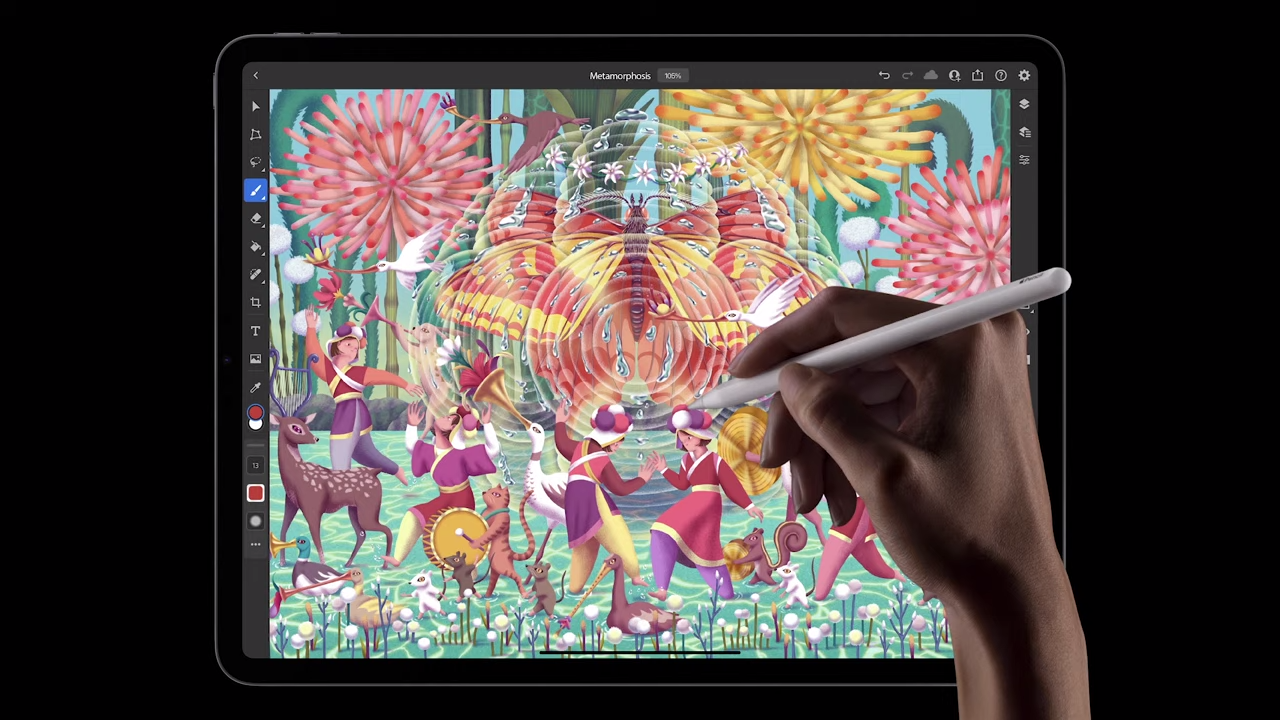iPad Pro 2021 Liquid Retina XR display could have mini-LED issue — What we know
Blooming is normal for mini-LED displays, but it can be jarring for iPad Pro 12.9-inch owners

One of the most significant updates to the new iPad Pro is a 12.9-inch Liquid Retina XDR display, which uses mini LED technology instead of a standard IPS panel. Unfortunately, some users are reporting a "blooming" effect, or when illuminated areas bleed into dark parts of the screen.
Using 2,500 local dimming zones, the new display is brighter than a normal LED panel, and offers high contrast and nearly perfect black levels. More importantly, it avoids the pitfalls of OLED panels in that images won't burn into mini LED screens.
- iPad Pro vs. iPad mini vs. iPad Air: Which is best?
- MacBook Air vs. MacBook Pro: Which laptop is best?
It sounds too good to be true, right? Well, for some it is. The problem being reported by iPad Pro owners stems from the underlying mechanisms of a mini LED panel. As PhoneArena explains, a traditional LED panel illuminates uniformly with "global dimming" whereas a mini LED panel uses local dimming with thousands of tiny pixels. This way, some can get brighter while others get darker instead of every pixel dimming at the same time.
Here’s my experience with the blooming on the M1 #iPadPro so far. It’s very noticeable in dark room with UI elements on top of a black background, but that’s the only scenario where I really notice it. It’s expected with this display tech but still jarring coming from OLED. pic.twitter.com/8tG1euFzqnMay 22, 2021
The problem occurs when you have a very bright group of pixels next to a very dark group. Under these conditions, some of the illuminated pixels can bleed into the dark areas, causing what's called "blooming", "ghosting" or a halo effect." It's a similar sort of effect that some people (especially those with astigmatism) see when they look at a bright light under dark conditions. You may have heard of light bleeding before; this is a bit different as it happens with clusters of bright pixels rather than only on the edges of a screen.
You will likely only notice the blooming in dark conditions as it happens when there is high contrast between the dim and bright pixels. Turn on the light or go outside during the day, and that bleeding will seemingly disappear from the tablet screen.
Apple is aware of the 'issue'
Apple already knows that its Liquid Retina XDR, or Mini LED, panel can cause light blooming. In a support article, the company says "The Liquid Retina XDR display improves upon the trade-offs of typical local dimming systems, where the extreme brightness of LEDs might cause a slight blooming effect because the LED zones are larger than the LCD pixel size."
This is Apple saying that blooming is normal behavior, and indeed it is. We expect to see the same light bleed problems on future mini LED panels, including those rumored to arrive on the upcoming 14-inch MacBook Pro and 16-inch MacBook Pro.
Stay in the know with Laptop Mag
Get our in-depth reviews, helpful tips, great deals, and the biggest news stories delivered to your inbox.
Is this a deal-breaker for the iPad Pro?
First off, this issue only affects the 12.9-inch iPad Pro as the 11-inch iPad Pro still uses a Liquid Retina LED display. If you're eyeing the bigger iPad Pro, this shouldn't prevent you from buying one. You won't notice the blooming in most conditions, only in a darker environment when there is a dark scene with a bright object. Even then, it shouldn't hurt your viewing experience too much.
We're in the process of reviewing the iPad Pro 12.9-inch. We'll put the screen through rigorous testing to see if we can replicate this effect. Look for our review to go live this weekend with photos and commentary on the display.
Phillip Tracy is the assistant managing editor at Laptop Mag where he reviews laptops, phones and other gadgets while covering the latest industry news. After graduating with a journalism degree from the University of Texas at Austin, Phillip became a tech reporter at the Daily Dot. There, he wrote reviews for a range of gadgets and covered everything from social media trends to cybersecurity. Prior to that, he wrote for RCR Wireless News covering 5G and IoT. When he's not tinkering with devices, you can find Phillip playing video games, reading, traveling or watching soccer.

